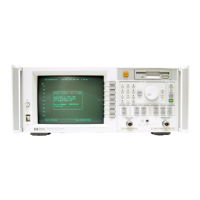I
-
I
-
Using
Limit
Testing
Limit testing is a measurement technique that compares measurement data to
constraints that you
dehne.
Depending on the results of this comparison, the
analyzer can indicate if your device either passes or fails the test.
Limit testing is useful for real-time tuning of devices to
speciEcations.
When
limit testing is turned on, pass/fail results can be output to the display and
also to the LIMIT TEST TTL IN/OUT connector on the rear panel. See “BNC
Connectors,
’
in Chapter 8 for more information.
Limit testing is implemented by creating individual flat, sloping, or single
point limits on the analyzer display. These types of lines may be used
individually or combined to represent the performance parameters for your
device under test. Also available are limit testing capabilities for five types
of marker searches: statistical mean, peak-to-peak ripple, flatness, delta
amplitude, and delta frequency.
Limit testing is only performed on the measurement data trace. It cannot be performed on a memory
trace.
The following examples are performed using a transmission measurement of
the bandpass
filter
shipped with your instrument. To follow along with these
examples, connect your Elter to the analyzer and press:
pzEq
4-29
深圳市盛腾仪器仪表有限公司 Tel:0755-83589391 Fax:0755-83539691 Website: www.Sengt.com

